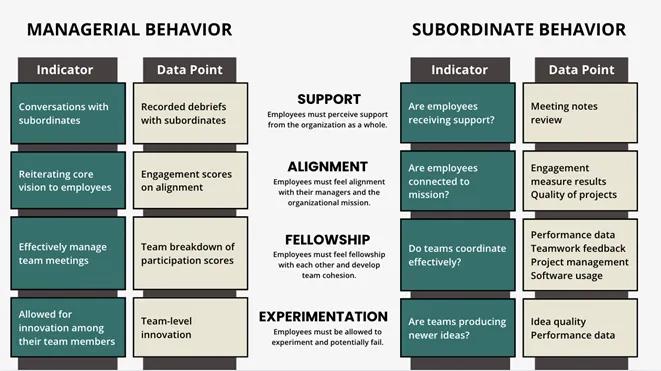ATD Blog
Building Psychological Safety Into Leadership Development
At the 2024 ATD Org Dev conference, we used the SAFE framework to discuss how leadership development can significantly improve organizational psychological safety.
Tue Dec 03 2024

Psychological safety has become a growing concern among employees and organizational leaders. The American Psychological Association’s 2024 work in America report highlights the need for improved psychological safety in the workplace. While psychological safety is seen as valuable by employees and has been scientifically studied as a precursor to effective organizational functioning, organizations still struggle to build a culture of psychological safety. This blog post will explore how to incorporate psychological safety in leadership development programs and how leadership development can actually improve the climate of psychological safety.
Psychological safety is defined as a workplace climate where organizational members can comfortably express their ideas, concerns, mistakes, without fear of negative repercussions. Organizations prioritizing psychological safety encourage employees to take interpersonal risks by openly communicating and sharing their ideas. Research indicates that psychological safety can lead to several important organizational outcomes including enhanced innovation and creativity, higher engagement and job satisfaction, improved productivity and team performance, and fewer negative psychological strains such as emotional exhaustion and workplace burnout.
In a series of blog posts, ATD explored how the SAFE framework can be used to understand post-COVID workplace behaviors, assess training programs for psychological safety, and close the loop on psychological safety initiatives so employees know that organizations care about the topic. The SAFE framework stands for:
Support: Employees must perceive support from the organization as a whole.
Alignment: Employees must feel alignment with their managers and the organizational mission.
Fellowship: Employees must feel fellowship with each other and develop team cohesion.
Experimentation: Employees must be allowed to experiment and potentially fail.

The following chart illustrates how you can use the SAFE framework to identify data points to measure the level of psychological safety within your organization.

At the 2024 ATD Org Dev conference, we used the SAFE framework to discuss how leadership development can significantly improve organizational psychological safety. Leaders are at the front lines of developing organizational culture, and organizational culture is often defined as what is rewarded within an organization. Hence, if leaders aren’t creating an environment of psychological safety, then the organization will not observe the development of psychological safety.
Leadership can be viewed as having two main components:
Task Orientation: The leader assigns tasks and provides role clarity and resources to accomplish tasks.
Relationship Orientation: The leader manages relationships within the organization and maintains a healthy social environment.

Many organizations view these two components of leadership as being unrelated, but in reality, they are reciprocal. The social environment that leaders build can affect how the work is accomplished. On the other end, how a leader rewards or recognizes good work can affect the social environment of the workplace. Both components are interrelated and generate a psychologically safe environment. For example, a leader fostering a culture of competition where the teams are forced to compete and be cutthroat reduces psychological safety as the employees will not feel safe sharing their ideas. Therefore, the social environment and relationship behaviors that are rewarded (in this case competitive behavior) has a direct impact on organizational work processes.
Using our SAFE framework, we can identify where psychological safety concepts are included in our leadership development programs. Use this chart to identify where psychological safety appears in your leadership development programs.

Review your instructional objectives and the leadership development content to see what concepts are used in your leadership development programs. Once you know whether the material is covered in your programs, you can identify behavioral indicators that indicate that leaders are creating psychologically safe environments. Different industries and organizations will have different behavioral indicators of psychologically safe environments. You can use data from surveys or exit interviews to assess how psychologically safe your organization is. In some cases, you can even use a custom-built psychological safety measure like the one our team at Talent Metrics uses to assess psychological safety in the workplace.
By using these resources, you can identify whether psychological safety is taught in your leadership development programs and can adjust your programming accordingly. Over time, you’ll see that leaders that learn how to create a culture of psychological safety will have teams that perform more effectively.
You've Reached ATD Member-only Content
Become an ATD member to continue
Already a member?Sign In

